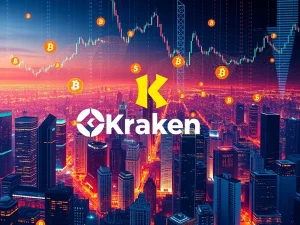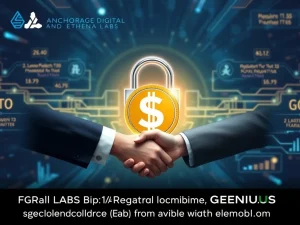Bitcoin Lightning Network: Faster Transactions for Everyday Use

How Does the Lightning Network Work?
At the core, the Lightning Network is designed as a second layer on top of Bitcoin’s main blockchain. The idea is to let users be able to make transactions off-chain while still being able to guarantee their security.
Here’s a simplified breakdown:
A payment channel is opened between two users by locking a certain amount of Bitcoin in a multi-signature wallet.
Within the channel, they can send several transactions without touching the main blockchain.
When they want to close the channel, they will broadcast the final balance on the Bitcoin blockchain, and the funds will be released in accordance with it.
This relieves stress from the main Bitcoin network and thus enables faster and cheaper BTC payments. The internal channel transactions are nearly instantaneous and many times cheaper in fees as compared to regular Bitcoin transfers.
Scalability Solution for Bitcoin
The primary advantage of the Bitcoin Lightning Network has to do with scalability. This means more transactions can be processed without affecting the speed or the fees that are on the network.
The following table shows some of the key differences between Bitcoin’s main blockchain and the Lightning Network in terms of transaction speed and cost:
Feature
Bitcoin Main Network
Lightning Network
Transactions per second
7
Millions
Confirmation time
10 minutes or more
Instant
Transaction fees
Varies (higher during congestion)
Low (fractions of a cent)
Due to its capability for millions of transactions per second, the Lightning Network may one day be a global payment solution that enables users to buy a coffee, pay for services, or even send micropayments across the world instantly.
Day-to-Day Bitcoin Usage Using Lightning
The Lightning Network is ideal for everyday BTC transactions, much less in size. Until the Lightning Network, it wasn’t exactly practical to buy a cup of coffee using Bitcoin. Besides the potential high cost of transaction fees compared to the item one was buying, confirmation times might be long.
Only with the Lightning Network does the paying for a small good become a valid proposition: the speed of transactions is virtually instant, and fees are really minimal. This enables multiple visions for BTC payments in day-to-day environments:
Retail Stores: Pay immediately where customers needn’t wait for confirmations of receipt.
Online Content Creators: Allow viewers to contribute small tips or pay for premium content with micropayments to the creators themselves.
Gaming: Players can use BTC payments for in-game purchases or rewards, with transactions happening instantly.
Lightning Network Payment Security
The Lightning Network is developed atop Bitcoin’s blockchain, which is to say it automatically would also carry all the security aspects of Bitcoin. But since it’s off-chain, some users could be concerned about safety.
What it does is that, through the use of multi-signature wallets and smart contracts, the funds move forward only if the two parties agree on the outcome. In case something goes wrong-for example, one party fails to properly close a payment channel-the funds automatically return to whom they rightfully belong.
Another aspect of security is the fact that, due to only the final balance of a channel being recorded on the Bitcoin blockchain, the privacy of the transactions inside the channel is better protected. Therefore, it turns the Lightning Network into a more private solution to perform regular BTC payments.
Challenges and Future Developments
The Lightning Network is still in its infancy and faces its challenges, like any technology would. Not all users understand it well enough yet, and there are still some technical problems hanging in the balance. For example, payment channels need to be pre-“funded” with Bitcoin in advance-a certain limitation. Also, though the Lightning Network has been growing steadily, it is not widely adopted yet by all businesses or exchanges.
However, development does not stop there, it’s still worked upon continuously for better usability and reachability. The more it is in use and being adopted for BTC payments via the Lightning network, the more it is evolving.
How to Start Using the Lightning Network
Want to get your hands on using Bitcoin Lightning Network? Here is how you can start:
Choose a Lightning Wallet: Several wallets on the market currently support the use of the Lightning Network, such as Muun, Phoenix, or Breez. The idea here is that they will enable you to open and manage payment channels with ease.
Fund Your Wallet: With your wallet all set, the next step will be to add some Bitcoin into your wallet. Once your wallet is loaded with Bitcoin, it means you are ready to open channels on the Lightning Network.
Open a Payment Channel: Always select some person or service you trust to open a payment channel. Once open, send as many transactions as you want instantly and with low fees.
Send or Receive Payments: Once the channel is set, you are ready to send or receive BTC payments over the network. That’s it!
The Future
The Bitcoin Lightning Network has great potential for the future of BTC payments, as it focuses on faster transactions, lower fees, and scalability by really changing how Bitcoin might be used in everyday purchases. Indeed, as more businesses and users begin to adopt this, we may very well see Bitcoin become more viable for a wider range of financial activities.
Most of the problems it faces today are technical in nature, but continued development and grassroots adoption will see the Lightning Network capable of being part of the identity that is Bitcoin. Whether you’re fresh to Bitcoin or you’re a seasoned user, this is something to pay attention to. Its potential to enable quick, everyday transactions can change how we interact with digital currency in the sense that it brings us closer to mass adoption.









